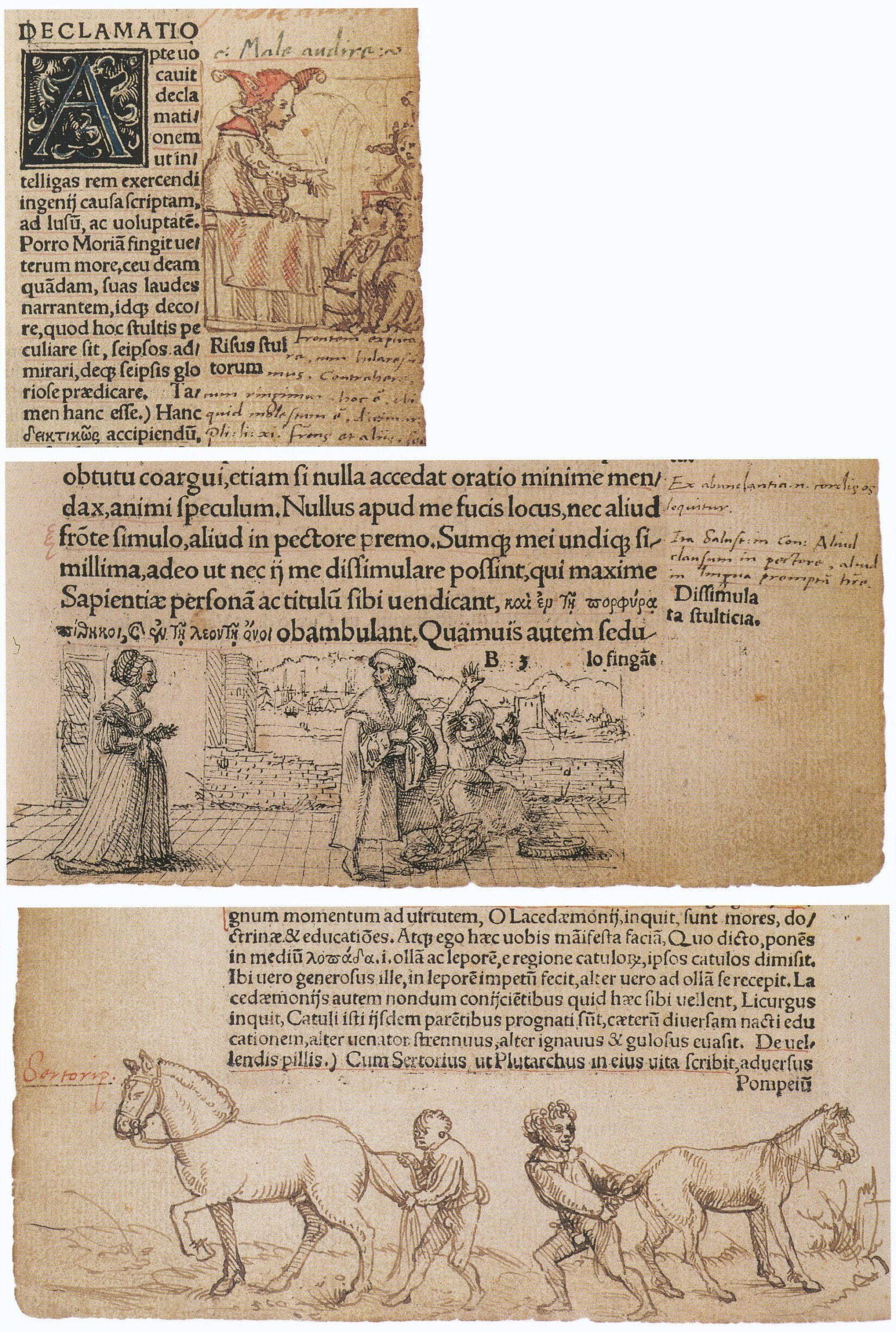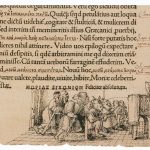Three Marginal Drawings in a copy of “The Praise of Folly” by Erasmus of Rotterdam. Pen and black ink oxidised to brown, subsequent additions in red, Kunstmuseum Basel. Folly in the Pulpit (no. 1); A Scholar Treads on a Market Woman’s Basket of Eggs (no. 3); Sertorius and the Example of the Horses (no. 15). Hans Holbein and his brother, Ambrosius, drew 82 marginal sketches in the copy of The Praise of Folly owned by classical scholar Oswald Myconius, who planned to show the result to the author, his friend Desiderius Erasmus. They include the first works by Hans Holbein to survive intact. Most of the sketches are by Hans Holbein, whose style and left-handed hatching identify him from Ambrosius.Drawing from December 1515, by Hans Holbein der Jüngere (1497/1498–1543), German painter and draughtsman. Public Domain. Source: Wikimedia Commons.
Forside 1509 Three Marginal Drawings in a copy of "The Praise of Folly" by Erasmus of Rotterdam. Pen and black ink oxidised to brown, subsequent additions in red, Kunstmuseum Basel. Folly in the Pulpit (no. 1); A Scholar Treads on a Market Woman's Basket of Eggs (no. 3); Sertorius and the Example of the Horses (no. 15). Hans Holbein and his brother, Ambrosius, drew 82 marginal sketches in the copy of The Praise of Folly owned by classical scholar Oswald Myconius, who planned to show the result to the author, his friend Desiderius Erasmus. They include the first works by Hans Holbein to survive intact. Most of the sketches are by Hans Holbein, whose style and left-handed hatching identify him from Ambrosius.Drawing from December 1515, by Hans Holbein der Jüngere (1497/1498–1543), German painter and draughtsman. Public Domain.
Three Marginal Drawings in a copy of “The Praise of Folly” by Erasmus of Rotterdam. Pen and black ink oxidised to brown, subsequent additions in red, Kunstmuseum Basel. Folly in the Pulpit (no. 1); A Scholar Treads on a Market Woman’s Basket of Eggs (no. 3); Sertorius and the Example of the Horses (no. 15). Hans Holbein and his brother, Ambrosius, drew 82 marginal sketches in the copy of The Praise of Folly owned by classical scholar Oswald Myconius, who planned to show the result to the author, his friend Desiderius Erasmus. They include the first works by Hans Holbein to survive intact. Most of the sketches are by Hans Holbein, whose style and left-handed hatching identify him from Ambrosius.Drawing from December 1515, by Hans Holbein der Jüngere (1497/1498–1543), German painter and draughtsman. Public Domain.



























